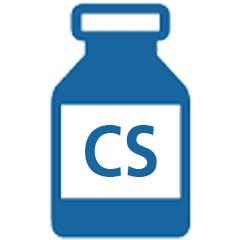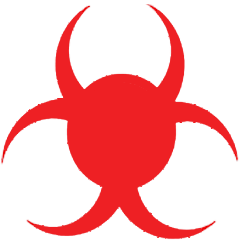Research Facility Classifications
Learn about researcher facility classifications across UC San Diego.
The varied nature of research on campus presents a wide variety of hazards. In order to ensure that these hazards are properly addressed through appropriate controls and training, and that the requirements imposed on research groups are truly applicable, the following categories have been created:
- Laboratory
- Technical Research Area
- Clinical Research Area
If the nature of research changes, areas can be reclassified based on input from Principal Investigators and Research Safety.
Process
Facilities classifications are set on a case-by-case basis, and as a collaborative effort between Principal Investigators and Environment, Health and Safety.
Definitions
|
Laboratory |
“Laboratory” means a facility where the “laboratory use of hazardous chemicals” occurs1. It is a workplace where relatively small quantities of hazardous chemicals are used on a non-production basis. Use or manipulation of biological or unsealed radiological materials would also qualify for this designation. |
|
Technical Research |
Research areas where no biological or radiological materials are used, and chemical usage does not meet the above definition of laboratory use. For example, small quantities of solvents or other materials used to maintain or clean equipment. |
|
Clinical Research |
Research areas where no hazardous materials are utilized, aside from the collection and manipulation of patient samples. |
1 – Definition is derived from 8 CCR 519.
Requirements
Regardless of the classification, all research facilities must do the following:
- Complete training courses applicable to their classification
- Complete a hazard assessment identifying required PPE
- Coordinate EH&S inspections and complete self-audits
Laboratories
Training
For a complete discussion of training requirements, see the Safety Training for Laboratories. The essential courses are:
- UC Laboratory Safety Fundamentals. This UC Learning Center eCourse introduces staff to fundamentals of laboratory and chemical safety, general safety, and their rights and responsibilities. Refresher training required every 3 years.
- Annual Laboratory Hazards Training. This UC Learning Center eCourse covers hazardous materials handling, waste disposal, and emergency response.
- Complete the New Laboratory Worker Checklist (PDF).
Hazard Assessments
The Laboratory Hazard Assessment Tool should be utilized to identify what PPE is required for lab activities. Once completed and approved by the PI, the following should take place:
- All personnel must review and acknowledge the assessment within the tool
- All PPE required by the assessment must be made available to personnel, and documented in the tool
Inspections
Coordinate inspections with your EH&S inspector and correct all noted items within 10 days of receiving your report.
Complete a Self-Audit using the Laboratory Self-Audit Form every once every three months to ensure a safe work environment.
Technical Research Areas
Training
For a complete discussion of training requirements, see the Safety Training for Technical Research Areas. The essential courses are:
- Safety Orientation - Injury and Illness Prevention. This UC class was developed in accordance with California state law and helps employees understand and avoid on-the-job risks.
- Annual Shop & Studio Environmental Compliance & Hazards Training. This UC Learning Center eCourse covers hazardous materials handling, waste disposal, pollution prevention, environmental compliance and emergency response.
- Complete the New Tech Worker Checklist (PDF).
Hazard Assessments
The Laboratory Hazard Assessment Tool should be utilized to identify what PPE is required for lab activities. Once completed and approved by the PI, the following should take place:
- All personnel must review and acknowledge the assessment within the tool
- All PPE required by the assessment must be made available to personnel, and documented in the tool
Inspections
Coordinate inspections with your EH&S inspector and correct all noted items within 10 days of receiving your report.
Complete a Self-Audit using the Technical Research Area Self-Audit Form once every three months to ensure a safe work environment.
Clinical Research Areas
Training
- Safety Orientation - Injury and Illness Prevention. This UC class was developed in accordance with California state law and helps employees understand and avoid on-the-job risks.
- Annual Laboratory Hazards Training. This UC Learning Center eCourse covers hazardous materials handling, waste disposal, and emergency response.
- Bloodborne Pathogens Training.
Hazard Assessments
The principal of universal precautions should be applied.
Inspections
Coordinate inspections with your EH&S inspector and correct all noted items within 10 days of receiving your report.
Complete a Self-Audit using the Technical Research Area Self-Audit Form once every three months to ensure a safe work environment.
Verifying lab personnel training using Training Analytics
Use My Research Safety to access Training Analytics and review training histories for lab personnel. This tool allows lab managers to monitor required, upcoming and expired training, specific to their lab. Available only to PI and EH&S Lab contacts.
Use the chart below to understand what each icon within the Training Analytics tool represents:
|
|
Description |
 |
Laboratory, The PI is classified under the laboratory use of chemicals. All personnel listed on the lab roster are required to take all required lab safety courses: UC Lab Safety Fundamentals, Annual Lab hazard training, 3-year refresher to UC Lab Safety Fundamentals. |
 |
PI / Responsible party is classified as a Technical lab (shop, limited chemical use (e.g., for cleaning of instruments), no biological or Radioactive materials used). |
 |
The PI is classified as a Clinical lab location where no hazardous materials used aside from the collection and manipulation of patient samples. All personnel listed on the Clinical roster are required to take initial and annual Bloodborne Pathogen Training & Annual Lab hazard training to meet IIPP requirements. |
 |
Individual is listed on the Controlled Substances Use Authorization (CSUA) and must complete CS training as required to be approved as an Authorized Personnel on the CSUA. |
 |
Individual is listed on the Biohazardous Authorization (BUA) and must complete all required training required under the BUA. |
 |
All required training is complete. |
 |
Indicates that training requirements are not completed. Click on individual to see what training is required. |
 |
Required training is about to expire. Turns yellow one month prior. |
Note: This page has a friendly link that's easy to remember: http://blink.ucsd.edu/go/rap